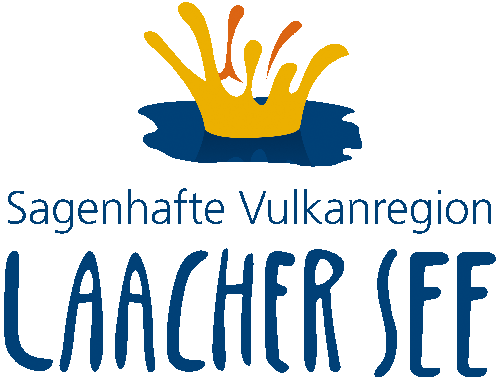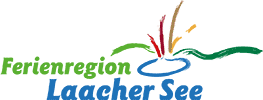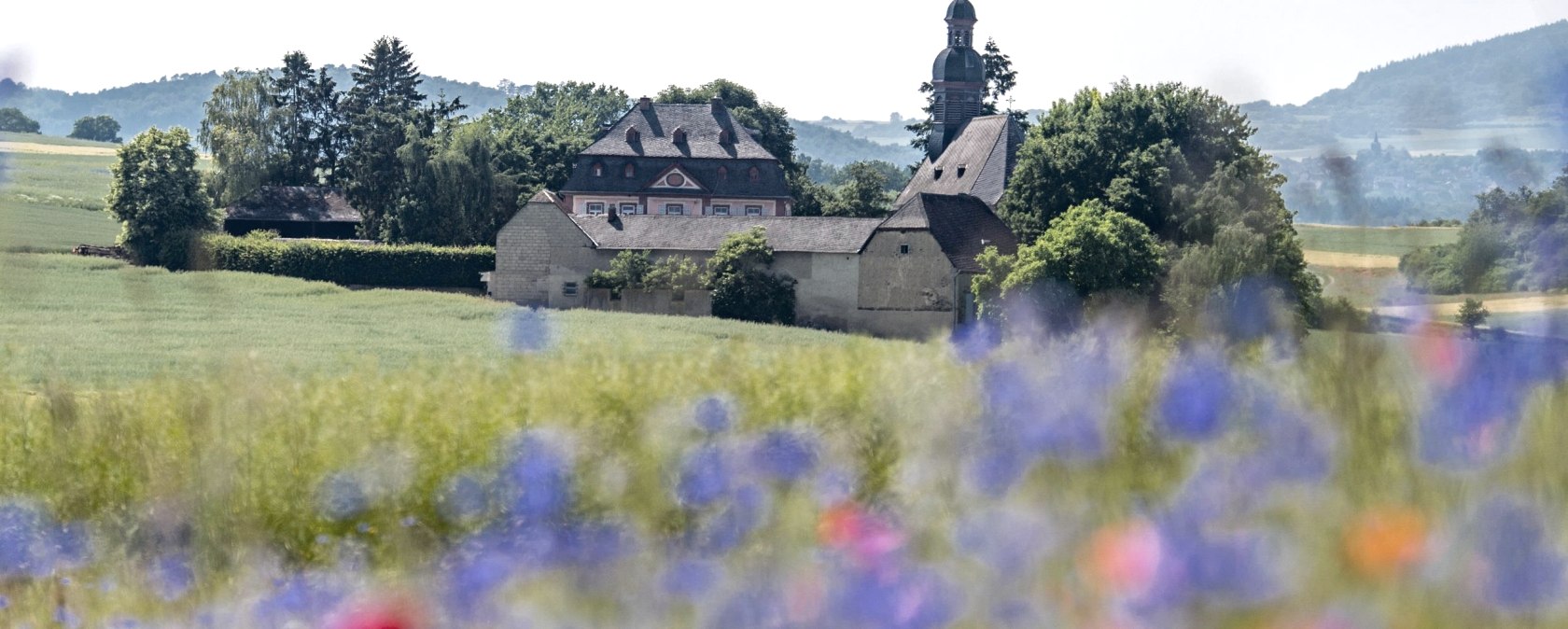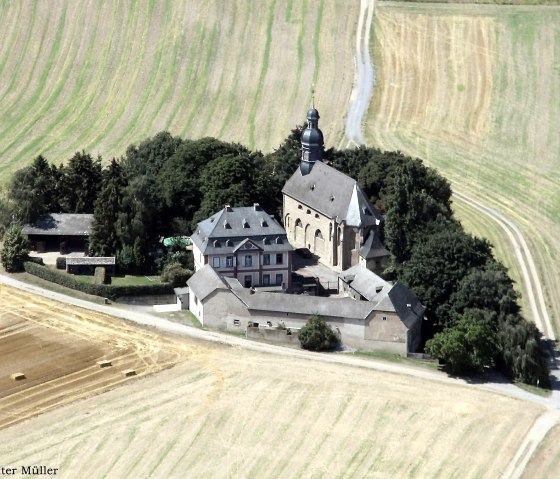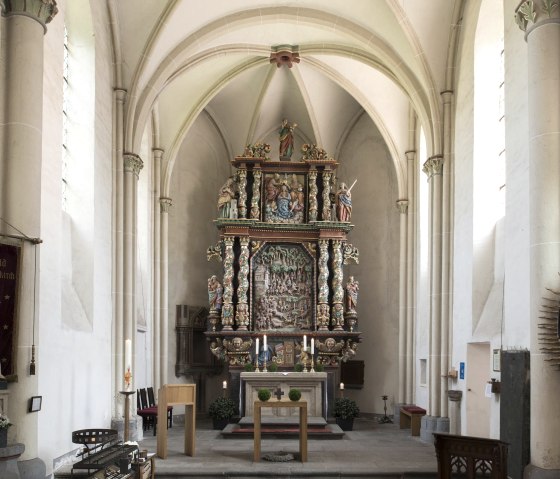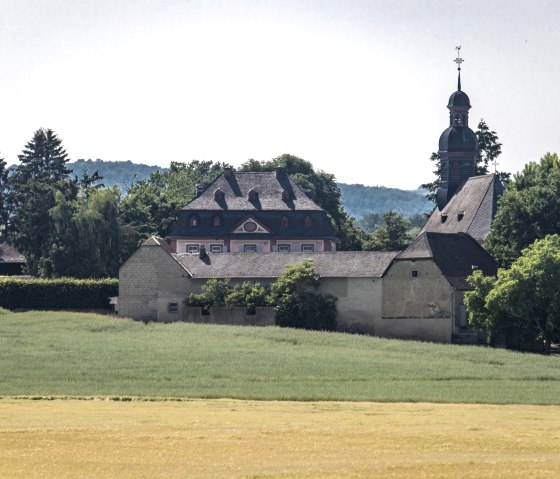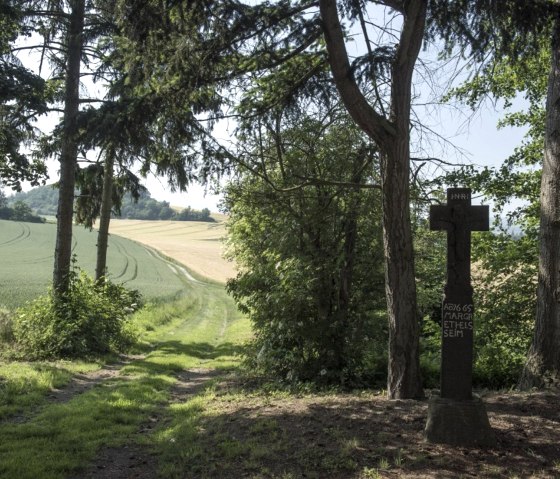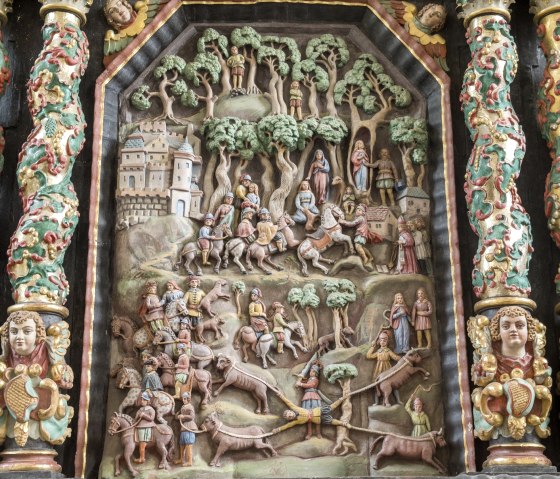Wallfahrtskirche Fraukirch
Thür
Every year before Easter, the first processions of the year come to Fraukirch from the surrounding communities. Belonging to the parish and parish of Thür, the pilgrimage church dedicated to Our Lady is located about 3 km southeast of Thür in the open field. Their pilgrims join the crowd of believers who have been on pilgrimage to Fraukirch for centuries. It is one of the oldest churches in the Eifel and the Rhineland and is the destination of many visitors and pilgrims every year.
All in all, Fraukirch can look back on over 1200 years of church tradition. Excavations before World War I and 1951 have shown that the current church stands on the foundations of a Franconian hall church from the 8th century. This was replaced at the beginning of the 13th century by a completely new building, of which only the central nave and choir are preserved after the side aisles were demolished in 1829. The connection between the late Romanesque forms of the central nave and the forms of early Gothic in the choir is remarkable in terms of art history.
Fraukirch is closely linked to the genome legend. The church houses the graves of Count Palatine Siegfried and his wife Genovefa.
Thanks to its location in the valley, the municipality of Thür will continue to offer good opportunities for cyclists. The newly built cycle paths provide access to the Maifeldwanderweg and Rheinradweg.
